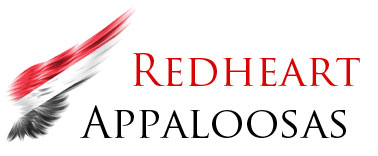The Class of 2021 – Best memories!
The Class of 2021 – Best memories!
The Class of 2021 – Best memories!
In conjunction with Farm & Stable Supplies for supporting the Appaloosa Horse Club (ApHC) UK 2021 Photo Competition. Thank you 🙂
There is no doubt turnout is best for new-born foals, enabling them to develop physically and mentally. All our mare’s and foals have individual turnout in the safety area of the duracorral before they are turned out in the field together.
Here are the first few days of their lives outside the barn…
In conjunction with Farm & Stable Supplies for supporting the Appaloosa Horse Club (ApHC) UK 2021 Photo Competition. Thank you 🙂
Can you imagine being born within 4 walls and then the door is opened, a new environment awaits you but also the realisation of what your legs are for…
Our post foaling check list is quite extensive, but only then can we relax and enjoy our foals knowing we have done our best to ensure their well-being.
Here are some clips from The Class of 2021, showing their characters within in the first 48hrs of life outside the stable.
In conjunction with Farm & Stable Supplies for supporting the Appaloosa Horse Club (ApHC) UK 2021 Photo Competition. Thank you 🙂
STAGE 3 of foaling is known as delivery of the placenta. The mare’s uterus continues to contract after foaling which causes the placenta to be expelled BUT so much more happens before the placenta is expelled.
So, the foals are safely out, either our mares get up or our foals crawl to their dam’s head but either way the umbilical cord breaks and the foals begin their first mission, to get to their feet. Their second mission is to find the milk bar, both missions are challenging, we only intervene if required to do so.
Our mares’ bond with their foals by licking, nuzzling, and nickering to them, it is wonderful to watch.
During the processes of the foals’ natural instincts, to stand and feed, the mare’s body is constantly experiencing the pain of contractions, the ultimate result we wait for is a placenta that is completely intact.
Once we are satisfied the foal has properly latched on and nursed, the foal has urinated and passed the meconium and most of all the placenta is intact, only then do we leave them, knowing we have done everything possible to ensure a great start to their new life.
In conjunction with Farm & Stable Supplies for supporting the Appaloosa Horse Club (ApHC) UK 2021 Photo Competition. Thank you 🙂
As the contraction persist, we witness the bulge of the white fluid-filled amniotic sac from the vulva followed by every breeder’s delight, two front feet and a nose. We wait and watch and talk to our mares, we know our mares well and they need to know I am there.
As the contraction persist, the feet and nose pop in and out of their vulvas, it is common for a mare to get up and back down as she repositions her foal for ease of delivery. The head and front feet are now out… Then, a few hard pushes that result in the shoulders passing through the birth canal and eventually the foal is out!
Telling them how well they have done and keeping everything calm, they whinny and look at their new-born and stay lying down which is beneficial for the foal to receive as much blood as possible to pass through the umbilical cord.
Right or wrong, we always pull out the back feet out, we know too many stories of foals trying to crawl whilst the feet are inside the mare whilst she is led down, the result can be detrimental to the mare, so we take no risks.
Whilst the foal is out, we gently clear the nasal passage of any fluid, imprint them before the mares get up or the foal crawl to the mares head and allow the bonding process to begin.
Either the mare will stay down, and the foal will start to crawl towards her, or the mare will get up and their first meet is just beautiful. This is their first bond, all our mares are great mothers, they are kind and do their foals well, we leave them bond.
In conjunction with Farm & Stable Supplies for supporting the Appaloosa Horse Club (ApHC) UK 2021 Photo Competition. Thank you 🙂
The Redheart Mare’s – Stage ONE of foaling and the imminent signs!
We keep our mares in a strict routine and when the doors are shut and a loud “night night” is yelled down the barn, the horses know it is quiet time and safe to foal.
Before foaling begins the mares must go through STAGE ONE of labour, a point prior to foaling when the mares look like they are showing signs of colic, box walking, kicking their bellies, rubbing their rear ends, lying down and getting up repeatedly, holding their tails up, looking at the flanks, nipping or kicking at the abdomen, sweating, frequently urinate and pass droppings, walking around, picking at bits of hay, pawing the ground, some show signs of yawning, chewing and generally looking restless with an obvious change in behaviour and generally looking uncomfortable.
We watch them closely as we wait for them to settle and not get worse…this is due to a hormone released which creates uterine contractions and the foal rotates from its back, onto its belly with its forelegs and head extended towards the mare’s vagina, it moves into position for ready for delivery.
It can last for hours with “breaks” in between or it can be consistent before foaling commences, either way, all mares are different, their pain thresh hold levels are different and all will show some of the signs mentioned. We watch them with a careful eye especially the maiden, she really has no idea what’s going on!
